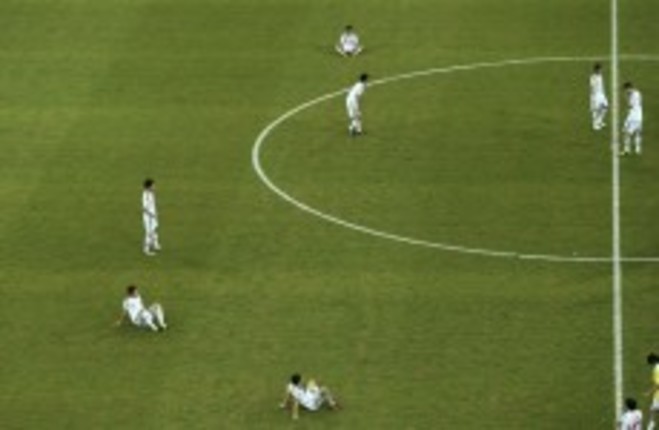One of the most interesting items from this summer’s Confederations Cup (apart from multiple demonstrations outside some of the grounds) is the way pre-tournament favourites Brazil, Spain and Italy are lining up with the tactics employed serving as a possible precursor to next year’s World Cup finals.
Brazil (4-2-3-1)
Luiz Felipe Scolari has deployed a 4-2-3-1 formation in Brazil’s back-to-back victories over Japan and Mexico with the midfield tandem of Luiz Gustavo and Paulinho anchoring the centre of the park. The solidity provided by that duo has permitted the attacking trio of Oscar, Neymar and Hulk the freedom to provide ample ammunition for lone striker Fred (or Jo) and also attack from varying angles when breaking from defence.
From a Brazilian point of view the most important aspect of the Gustavo-Paulinho axis is the freedom full-backs Marcelo and Dani Alves have to burst up either wing and increase the South Americans’ options in the final third. Shutting down those flying wing-backs is the key to getting at a sometimes porous Brazilian defence but for now the host country’s tactics look set to guarantee a place in the final.
Spain (4-3-3)
Spain’s favoured 4-3-3 formation looks set to remain intact for the duration of the Confederations Cup and why not having served the World and European Champions so well in the recent past. Sergio Busquets plays the pivotal role in Vicente del Bosque’s all-conquering side by floating in front of the back four without the ball before anchoring a devastating midfield of Fabregas, Iniesta and Xavi once in possession.
The speed at which Spain move the ball is mesmerising at times but their calmness in possession and ball retention (75% – the highest in the tournament after only one game) are just as impressive, allowing the intelligent movement of Pedro and Roberto Soldado to evade their markers and create multiple opportunities. Add in the fact del Bosque can introduce the likes of Mata, Cazorla, Silva, Navas or Torres from the bench and Spain have every reason to be confident of winning the tournament outright.
Italy (4-2-3-1)
Much like Brazil, Cesare Prandelli has pinned the success of his 4-2-3-1 set-up on the dynamism of midfield duo Andrea Pirlo and Daniele De Rossi. Both excelled in the 2-1 defeat of Mexico in their opening group match and set the tempo throughout a sometimes tough encounter.
Stationing Ricardo Montolivo and Claudio Marchisio just behind Mario Balotelli has helped Italy rack up six goals in two games despite question marks remaining about the Italians’ defensive solidity. Japan exposed Italy’s frailties both from set pieces and quick counter-attacks in scoring three times and missing multiple opportunities in the 4-3 defeat. Despite the presence of the experienced Andrea Barzagli and Giorgio Chiellini in defence as well as the ageless Gigi Buffon between the sticks, Italy have looked slack at times against and will need to shore up considerably to have any chance of claiming the trophy.
Ger McCarthy is an Irish-based freelance sports journalist and published author. A regular contributor to Irish daily national the Irish Examiner, he also pens weekly columns for both the Evening Echo & Southern Star newspapers. Has written extensively for the Setanta Sports, NewsTalk, and Shoot! Football magazine web sites and is a regular member of Back Page Football’s Hold The Back Page football podcast. His first book ‘Off Centre Circle’ about a lifetime spent toiling in the amateur football leagues of Ireland received critical acclaim.

